
.
In this Dalton Transactions Hot article, Chebrolu P. Rao from the Indian Institute of Technology, Bombay and colleagues investigate the anticancer activity of the organometallic compound, copper (II) anthracenyl-terpyridine.
This compound is particularly exciting because it kills cells in a way not seen before with copper complexes.
.
Read the full article for FREE to find out more…
.
Synthesis, characterization, plasmid cleavage and cytotoxicity of cancer cells by a copper(II) complex of anthracenyl-terpyridine
Amit Kumar, Jugun Prakash Chinta, Amrendra Kumar Ajay, Manoj Kumar Bhat and Chebrolu P. Rao
Dalton Trans., 2011, DOI: 10.1039/C1DT10201J











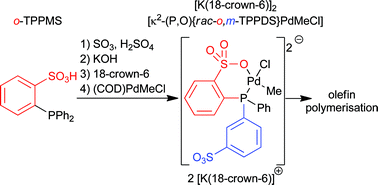 In this HOT article, a very careful synthetic and catalytic study of the use of di- and trisulfonated phosphines with o, m and o, m, m substitution patterns is described. Pd complexes of these were tested for copolymerizations with polar monomers. This led to a novel anionic phosphine sulphonate Pd(II)-based pre-catalyst salt for polymerisation reactions. Although, polymerisation in the presence of methyl acrylate, acrylonitrile and vinyl acetate led to reduced incorporation values compared to the available literature reports in combination with problems that are attributed to aggregation of the catalyst in most cases, the facile synthesis of chelating highly polar ligands which show high water solubility could be of significant interest for homogeneous catalysis by application in other systems.
In this HOT article, a very careful synthetic and catalytic study of the use of di- and trisulfonated phosphines with o, m and o, m, m substitution patterns is described. Pd complexes of these were tested for copolymerizations with polar monomers. This led to a novel anionic phosphine sulphonate Pd(II)-based pre-catalyst salt for polymerisation reactions. Although, polymerisation in the presence of methyl acrylate, acrylonitrile and vinyl acetate led to reduced incorporation values compared to the available literature reports in combination with problems that are attributed to aggregation of the catalyst in most cases, the facile synthesis of chelating highly polar ligands which show high water solubility could be of significant interest for homogeneous catalysis by application in other systems.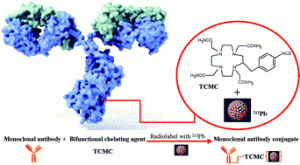

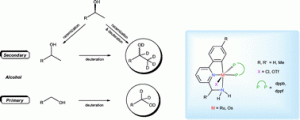


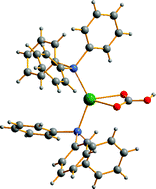

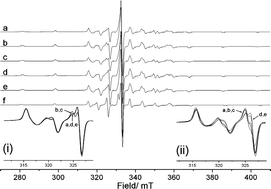 In this HOT article, the authors have extended their work in understanding enantioselective catalysis by coordination compounds. The role of steric hindrance in controlling the binding mode of propylene oxide to a novel vanadyl salen-type complex N,N‘-bis(5-tert-butylsalicylidene)-1,2-cyclohexanediamino-vanadium(IV) oxide, [VO(3)], has been investigated using CW/pulse EPR, ENDOR and HYSCORE spectroscopy and compared to that of the parent complex N,N‘-bis(3,5-di-tert-butylsalicylidene)-1,2-cyclohexanediamino-vanadium(IV) oxide, [VO(1)]. Removal of the ‘inner tert-butyl groups from the salicylidene rings reduces the steric hindrance between the ligand and epoxide substrate. As a result the selectivity for binding single enantiomers of propylene oxide in these complexes is reversed in [VO(3)] relative to [VO(1)].
In this HOT article, the authors have extended their work in understanding enantioselective catalysis by coordination compounds. The role of steric hindrance in controlling the binding mode of propylene oxide to a novel vanadyl salen-type complex N,N‘-bis(5-tert-butylsalicylidene)-1,2-cyclohexanediamino-vanadium(IV) oxide, [VO(3)], has been investigated using CW/pulse EPR, ENDOR and HYSCORE spectroscopy and compared to that of the parent complex N,N‘-bis(3,5-di-tert-butylsalicylidene)-1,2-cyclohexanediamino-vanadium(IV) oxide, [VO(1)]. Removal of the ‘inner tert-butyl groups from the salicylidene rings reduces the steric hindrance between the ligand and epoxide substrate. As a result the selectivity for binding single enantiomers of propylene oxide in these complexes is reversed in [VO(3)] relative to [VO(1)].